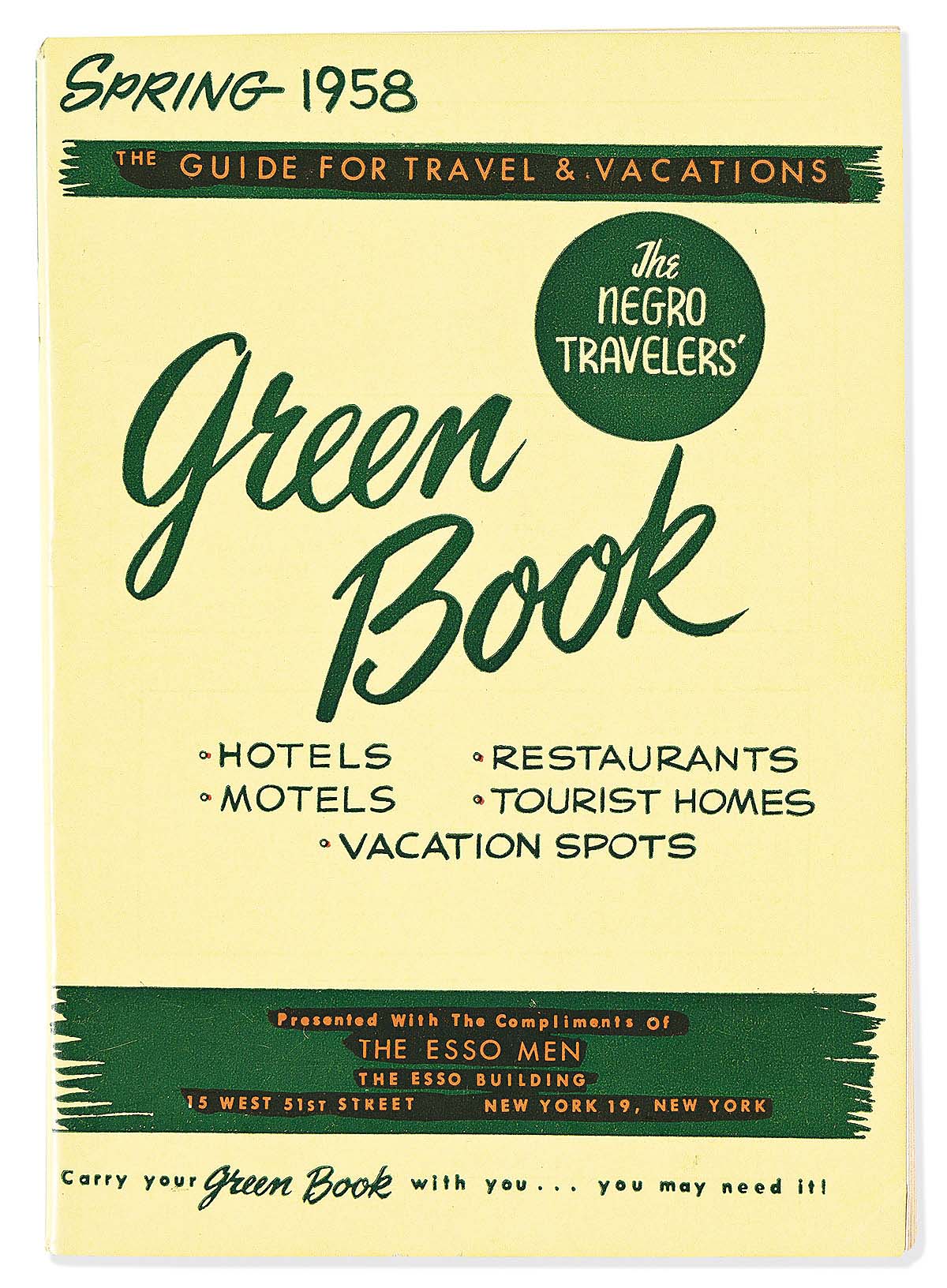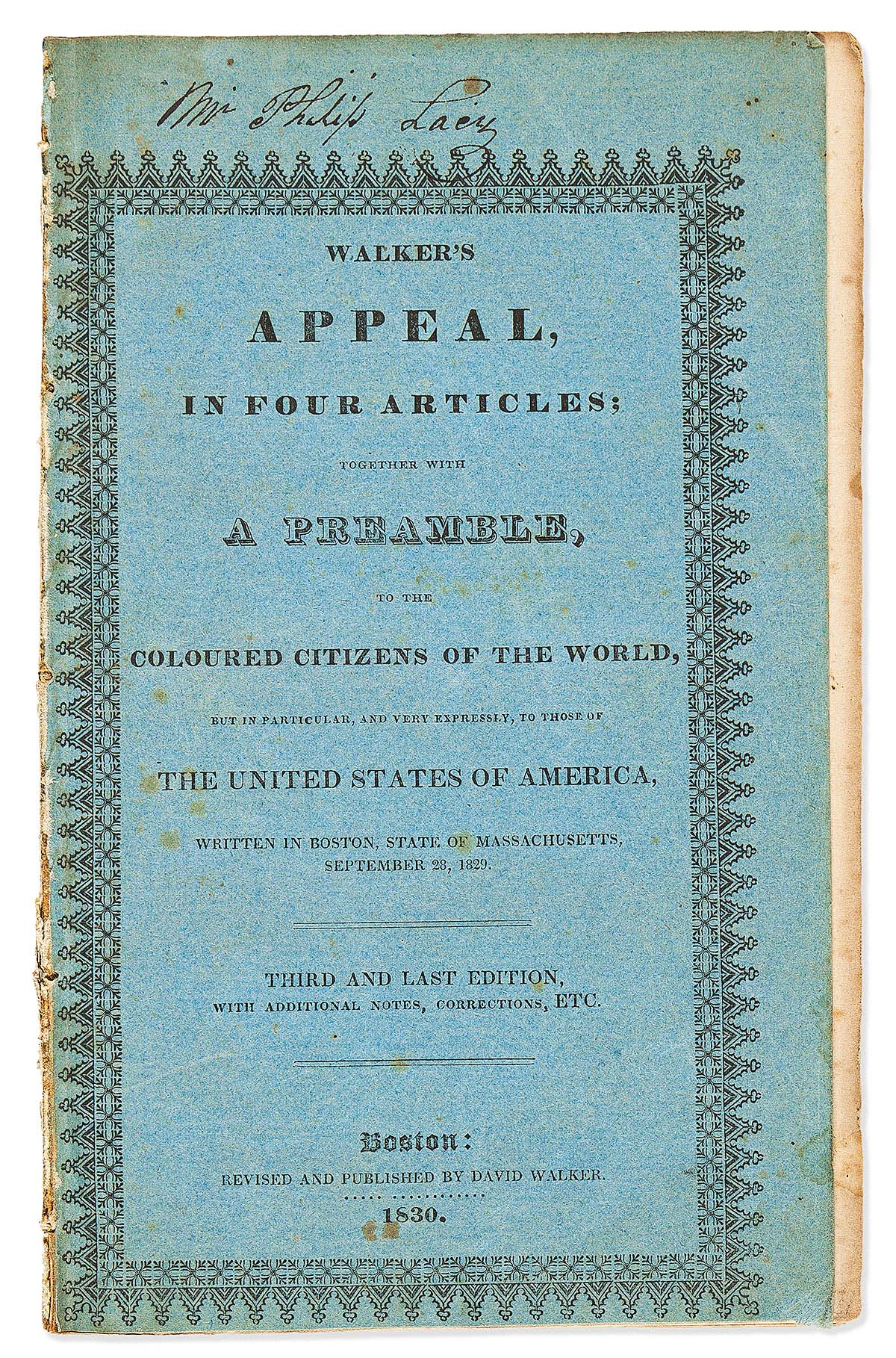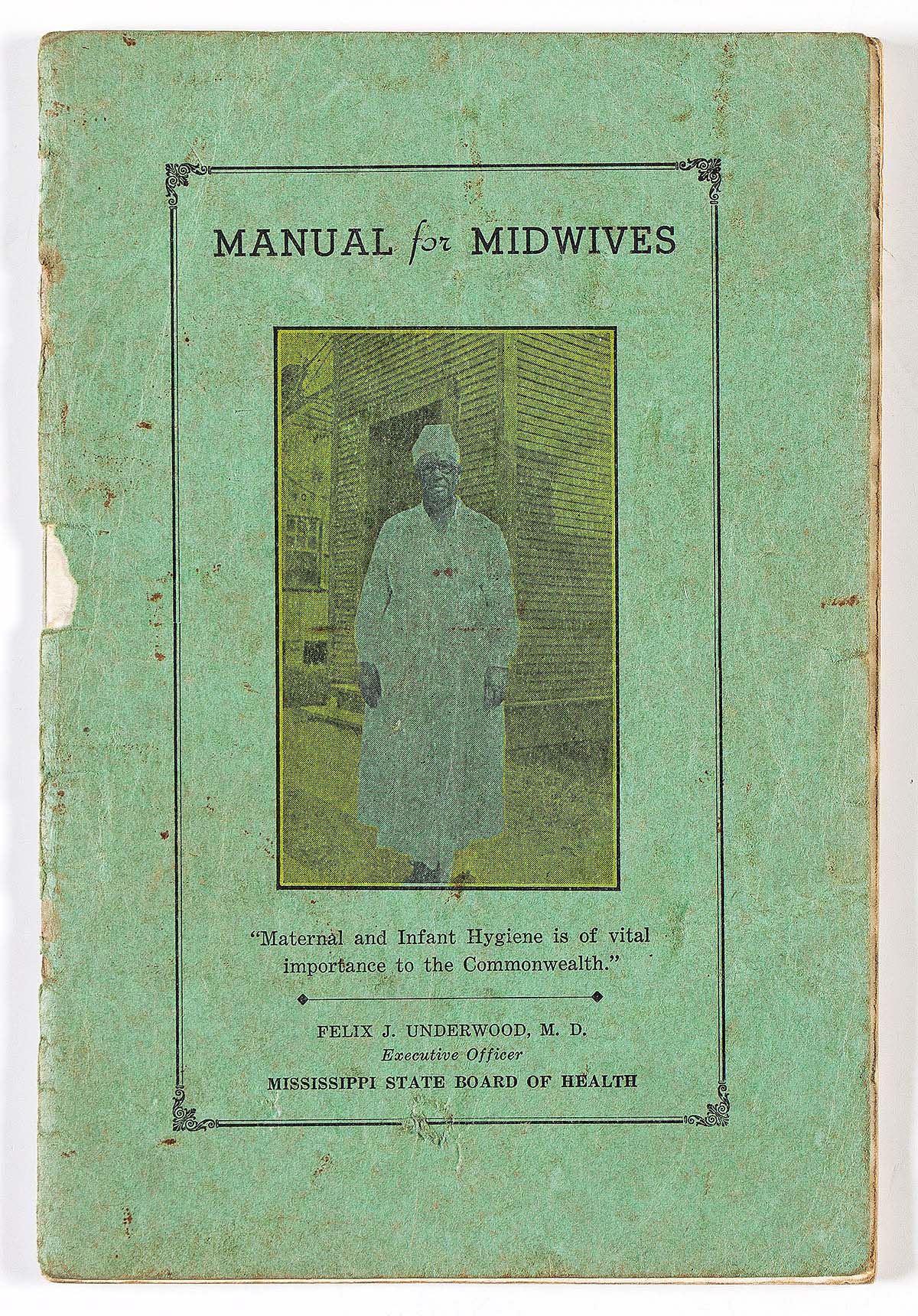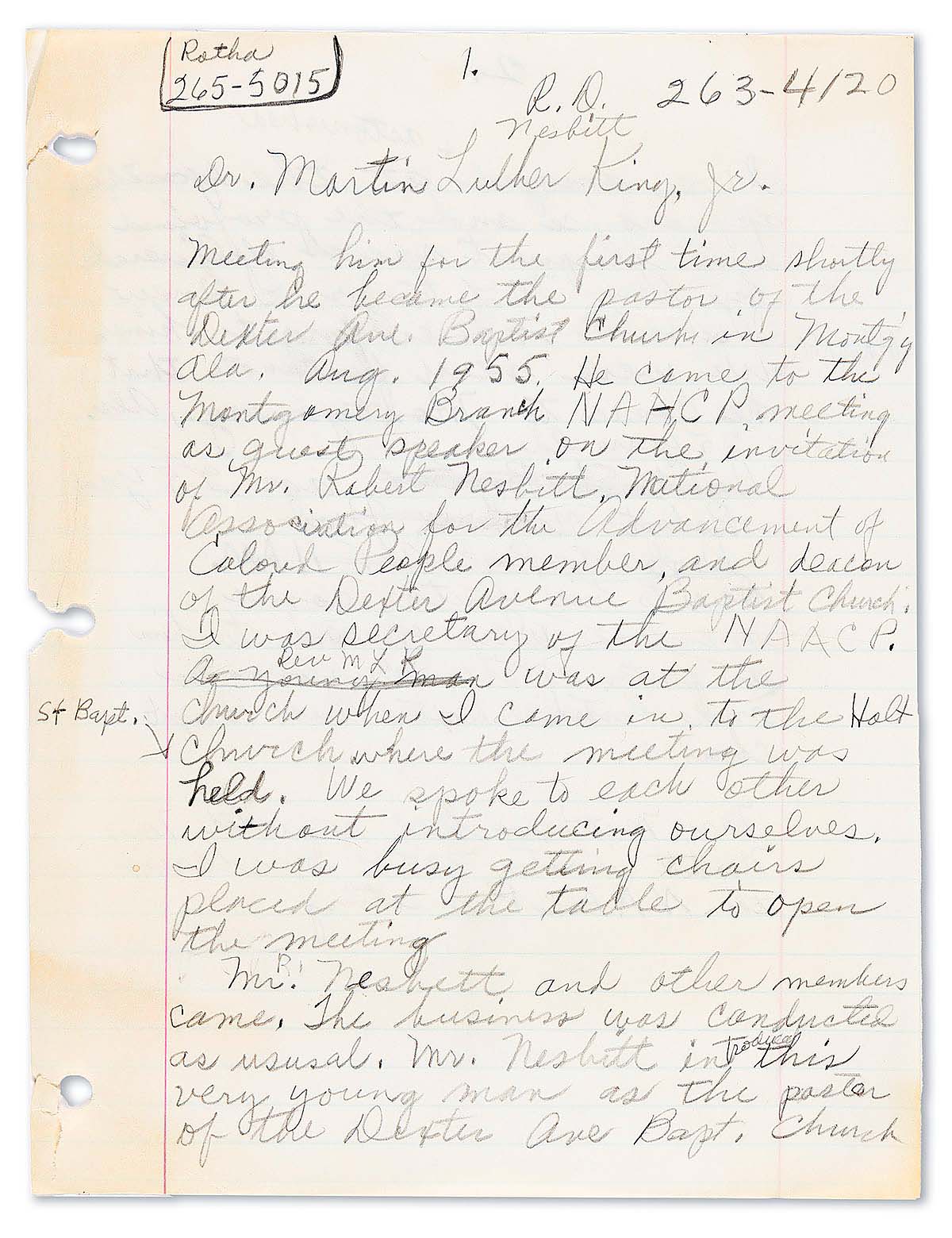
Achieving $62,500, this special Esso Standard Oil Company edition of Victor Green’s The Negro Travelers’ Green Book, Spring 1958, New York, set a record for any edition of the Green Book sold, and it was the top-priced lot of the day ($20/30,000).
Review by Carly Timpson
NEW YORK CITY — On March 20, Swann Galleries presented 403 lots of material related to American civil rights leaders, photographs and other ephemera documenting the era of Black enslavement and other important artifacts of Black history in America in its Printed & Manuscript African Americana auction. Rick Stattler, Swann’s director of books and manuscripts, said, “Institutions and private collectors are maintaining their commitment to preserving Black history. We are proud to do our small part in bringing this important material into the public eye.” In total, the auction realized $1,119,371 and had a sell-through rate of 88 percent.
Earning the sale’s highest price and a record for any edition of the text was a spring 1958 edition of Victor Green’s indispensable The Negro Travelers’ Green Book, published in New York with 80 directory pages plus four pages of illustrations at the center fold. Per the catalog, this edition “was printed as a special promotional giveaway by the Esso Standard Oil Company,” a Black-owned filling station in Buffalo, N.Y. With provenance to the consignor’s grandmother, this Green Book, with its original colored wrappers, more than doubled its high estimate, selling to an institution for $62,500. The catalog noted several differences from the standard edition for that season, citing an alternate font used for “Spring 1958,” the absence of “$1.25” on the upper right corner and the addition of “Presented With The Compliments Of The Esso Men” in a band across the bottom.
Another worthy text was abolitionist David Walker’s self-published Walker’s Appeal in Four Articles; Together with a Preamble, to the Coloured Citizens of the World, But in Particular, And Very Expressly, To Those of The United States of America. Originally written in Boston in 1829, this was the “Third and Last Edition, with Additional Notes, Corrections, Etc.,” published in 1830. Walker’s Appeal was “widely considered one of the most radical and uncompromising calls for Black self-determination,” per the auction catalog. The catalog also stated that this book was originally owned by one Philip Lacy, presumably the same man who was “active in the New York African Society for Mutual Relief (National Anti-Slavery Standard, 19 March 1846); was listed in the 1857 New York directory as a whitewasher, colored; was a member of the Boyer Lodge of the Prince Hall Freemasons; and died in New York at the age of 60 (New York Tribune, 7 December 1859).”

This “Third and Last Edition” of Walker’s Appeal in Four Articles by David Walker (1796-1830), Boston: 1830, brought $52,500 ($3/4,000).
Historic publications also included several speeches and lectures by Frederick Douglass, memoirs and narratives of enslaved individuals, guides magazines and others. Fourteen lots were by or related to Frederick Douglass, one of the most well-known Black American abolitionists. Among those lots was a circa 1893 printing of his “Self-Made Men: Address before the Students of the Indian Industrial School, Carlisle, Pa.” In this address, Douglass contextualizes Black experiences within the philosophies of American ambition. Surpassing its high estimate by five times, this 39-page printing sold for $30,000. Additionally, a first edition printing of Douglass’ 1855 “The Anti-Slavery Movement” lecture before the Rochester Ladies’ Anti-Slavery Society (Rochester: Lee, Mann & Co, Daily American Office, 1855), sold to an institution for $16,250 ($4/6,000).
Catalog notes stated that Venture Smith was born in West Africa and enslaved as a young boy, eventually being sold to an owner in Connecticut, and was able to buy his own freedom in 1765. Smith’s A Narrative of the Life & Adventures of Venture, a Native of Africa, but Resident above Sixty Years in the United States, published in New London, Conn., by “A Descendent of Venture” in 1835, was won by an institution for $27,500. The catalog went on to note that this text, of which this was a second edition printing, is “One of the scarcest and most important of the first-hand narratives of the Middle Passage, and the first slavery narrative published in the United States.”
Published a century later and selling for $13,750 was a guide for midwives in Mississippi, authored by Dr Felix Joel Underwood. This Manual for Midwives, featuring a Black woman on its cover and other illustrations of Black women throughout, is notable as Black history as Underwood “did not overlook the medical problems of African Americans” and “fought indifference to the plight of Blacks and argued that poor housing and poverty rather than racial differences caused high levels of disease among African Americans,” according to the Mississippi Encyclopedia, as cited in the auction catalog.

Published circa 1935 by the Mississippi State Board of Health, this 40-page copy of Manual for Midwives by Felix J. Underwood, MD (1882-1959), brought $13,750 ($1,5/2,500).
The auction included multiple large ephemera collections or assorted lots relating to people or places remarkable to Black history. Leading the category was a suitcase filled with printed material, illustrations, photographs, letters, legal documents, invitations and more, once belonging to Alonzo Collins, the proprietor of Washington’s Crystal Caverns nightclub, also known as Bohemian Caverns. The bulk lot dated from 1926 to 1960 and sold to an institution for $40,000 — well beyond its $10,000 high estimate.
Similarly surpassing expectations was a collection of ephemera and artifacts relating to Pullman Porters, an instrumental group of mostly Black men who worked on the Pullman Company’s sleeping cars in the mid Twentieth Century. The catalog noted, “Almost universally African-American men, they were poorly paid, reliant upon tips, and often subject to abuse by customers. The formation of the Brotherhood of Sleeping Car Porters led by A. Philip Randolph improved wages and job security, and the profession often served as a path to home ownership.” Comprising a train step stool, a sleeping car blanket, several branded towels, a porter’s cap and other uniform pieces, playing cards, other small artifacts, several pamphlets relating to the company and its porters and 11 photographs, the lot pulled into the station for $32,500, more than five times its high estimate.
An associate of Malcolm X and collaborating writer of The Autobiography of Malcolm X, Alex Haley amassed a substantial collection of items from and about the revolutionary activist. With most items purchased at an auction of Haley’s estate in 1992, a collection of articles, speeches, correspondence, telegram, letters and other items relating to Malcolm X and belonging to Haley sold together, housed in a custom black Morocco folding case with a large “X” detailed on the front and “Alex Haley, Malcolm X” inscribed on the spine. Two of the items in the collection were signed by Malcolm X and another bore his handwritten annotations. Altogether, the collection brought $30,000.

Rosa Parks penned this essay recounting her first meeting with Dr Martin Luther King, Jr. It was written up for $20,000 ($30/40,000).
Handwritten manuscripts and documents, especially if they were written by notable figures, always do well. This sale included several, with highlights by Frederick Douglass and Rosa Parks. A brief statement regarding equal suffrage for all individuals “without distinction of race or color” was written and signed by Douglass. With his abbreviated signature, the original memo was signed and dated “Fred’k Douglass/1866.” The statement, which was not from any other text written by Douglass though it echoed a common sentiment, was claimed by an institution for $25,000. An unsigned handwritten essay or reflection by Rosa Parks generated $20,000. As the catalog stated, this document “recalls an important moment in the history of the civil rights movement: the first meeting of Rosa Parks and Martin Luther King, Jr, on 19 June 1955.” Though the loose leaf paper essay was undated, it was thought to have been written between 1988 and 1994. It was in the collection of Gregory J. Reed, the co-author of Parks’ 1994 memoir Quiet Strength and her personal attorney, and was later purchased at an auction of his items. A collection of items, including a letter from Hillary Clinton to Parks, items relating to Parks’ Congressional Gold Medal ceremony and other memorabilia, had the same provenance and sold for $5,500 ($2/3,000).
Items related to our nation’s dark history with slavery, including auction broadsides, performed well, with several institutional purchases. Achieving the highest price in the category was a broadside reading “Valuable Acclimated Slaves, For Sale by Auction by Issac L. M’Coy.” This notice listed and briefly described the 95 enslaved people who were to be sold by M’Coy at the Exchange Coffee House at the corner of Chartres and St Louis Streets in New Orleans in March 1836. Signed twice by M’Coy, the broadside brought $15,000. For $10,625, an institution claimed a smaller broadside notice that read “Turn Out! Turn Out!! / No Compromise With Slavery!!!” This announcement was for “A meeting of the colored citizens of the City of Oswego (and all others who will, may come to the rescue)” to protest the Compromise of 1850 and the Fugitive Slave Act, which, in May 1850 when this meeting took place, were making their way through Congress. Swann noted that no other examples of this document were found in the Online Computer Library Center, at auction or elsewhere.
Swann will offer additional lots of general Printed & Manuscript Americana on June 12.
Prices quoted include the buyer’s premium as reported by the auction house. For information, www.swanngalleries.com or 212-254-4710.




















